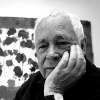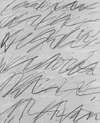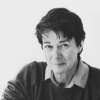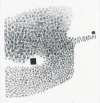Hans
Hartung
Hartung's innovative approach to abstraction and his exploration of spontaneous gesture revolutionised Post-War European art. If you're looking for Hans Hartung original prints and editions for sale or would like to sell, request a complimentary valuation and browse our network's most in-demand works.
Hans Hartung art for sale
Discover Hans Hartung prints for sale, exclusively available through our private network of collectors. Explore signed and unsigned screenprints, lithographs, digital prints, and rare editioned proof prints by era-defining blue chip artists.
Sell Your Art
with Us
with Us
Join Our Network of Collectors. Buy, Sell and Track Demand
Biography
Born in Leipzig, Germany, in 1904, Hartung showed an early creative inclination, influenced by his artistic family background. He cultivated an early admiration for the works of Rembrandt, alongside German painters like Lovis Corinth, as well as Expressionist figures such as Oskar Kokoschka and Emil Nolde.
In the 1920s, Hartung's began experimenting with abstraction. His works were comprised of energetic lines and bold gestures, emerging from a fascination with the expressive process of mark-making.
During World War II, Hartung joined the French Foreign Legion. He was sought out by the Gestapo and subsequently detained by French authorities for seven months. Once they discovered he was an artist, he was placed in a red cell, aimed at damaging his vision.
After his release, he rejoined the Legion and fought in North Africa, where he lost a leg during a battle near Belfort. In 1945, he was granted French citizenship and later awarded the Croix de Guerre for his wartime service.
In the post-war period, Hartung's career flourished as he became a central figure in the Parisian art scene. His association with the Art Informel movement in the 1950s solidified his reputation as a leading abstract artist. Hartung's work during this period was characterised by large-scale canvases featuring sweeping brushstrokes and gestural compositions.
Hartung's innovative techniques, including the use of olive branches and garden rakes to apply paint, demonstrated his experimental spirit. This approach culminated in his groundbreaking work of the 1960s, which saw him awarded the Grand Prize for painting at the 1960 Venice Biennale.
From the 1960s until his death in 1989, he continued to explore new methods of paint application. He developed a technique using paint sprayers, which allowed him to create works of unprecedented scale and intensity. This late period of his career, saw Hartung push the boundaries of abstraction even further, cementing his legacy as a tireless innovator.
From the 1960s until his death in 1989, he continued to explore new methods of paint application. He developed a technique using paint sprayers, which allowed him to create works of unprecedented scale and intensity. This late period of his career, saw Hartung push the boundaries of abstraction even further, cementing his legacy as an unrelenting innovator.



















